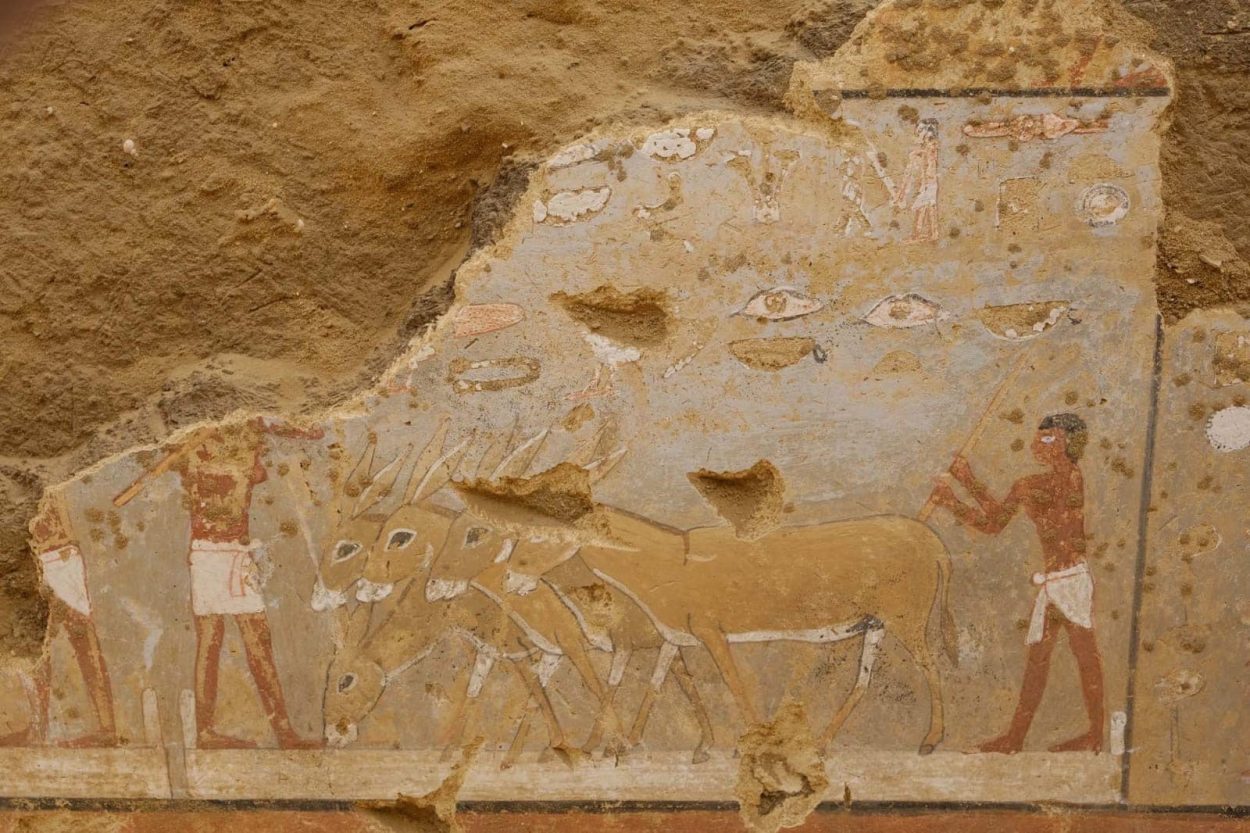A joint Egyptian-German archaeological mission has discovered a mastaba from Egypt’s Old Kingdom Period during excavations at Dahshur.
Dahshur is an ancient Egyptian pyramid complex and necropolis in markaz Badrashin on the Western Desert plateau.
The complex is mainly known for Senefru’s Bent Pyramid and the Red Pyramid, which are among the oldest and best preserved pyramids in Egypt. Other major monuments include the White Pyramid, the Black Pyramid, and the pyramid of Senusret III.
Excavations at Dahshur have recently uncovered a mudbrick built mastaba and reliefs that belonged to an individual named neb-neb-af and his wife Idut, who lived during the late 5th and early 6th dynasty.
– Advertisement –
A mastaba is typically described as a tomb in the form of a flat-roofed, rectangular structure with inward sloping sides.
They essentially served as a home for the “ba” (soul) during the afterlife, and would house family burials rather than individuals, with several burial shafts acting as “rooms”. A second chamber known as a serdab would be used to hold essential items for the deceased, such as clothing, precious items, beer and grain.

According to Dr. Stefan Zeidelmeier, former director of the German Institute of Archaeology and head of the mission, neb-neb-af held several titles in the royal palace as a tenant administrator (khentyu-shi), while his wife held the title of priestess of Hathor.
Excavations have also found a necropolis used for the burial of palace servants from the reign of Amenemhat II, the third pharaoh of the 12th Dynasty, a harbour and bridge that served the Bent Pyramid, and a ritual garden adjacent to the Valley Temple.
Dr. Zeidelmeier explained that further work will be undertaken at the mastaba site to uncover more secrets hidden within.
Header Image Credit : Ministry of Tourism and Antiquities
Sources : Ministry of Tourism and Antiquities
– Advertisement –

